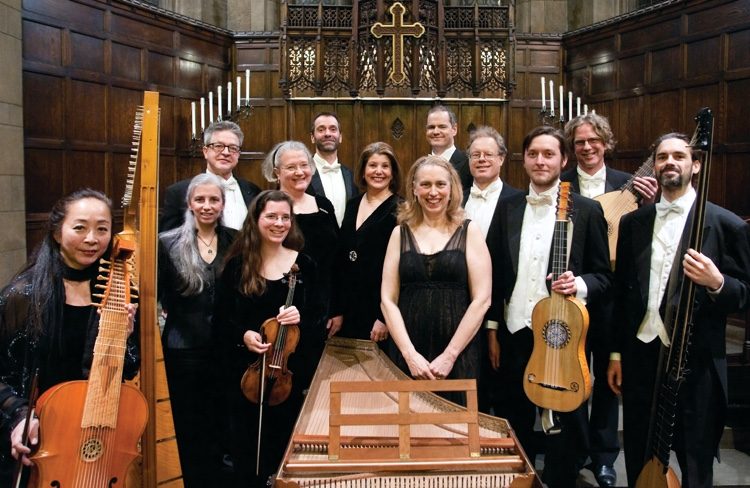
(Photo by Karsten Moran)
By Mark Kanny
Discovery remains an enduring delight in the early-music world, even after decades of encountering forgotten masterpieces and learning more effective stylistic approaches. Libraries and copying machines have played a large part, enabling intrepid performers to give audiences that why-haven’t-I-heard-this-before feeling.
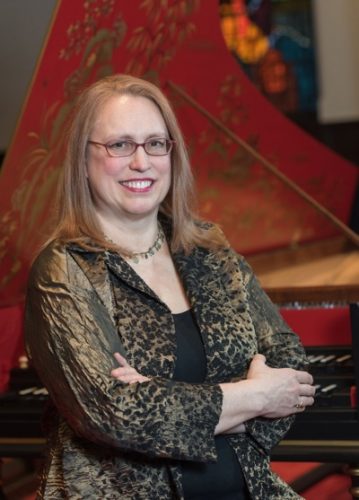
That’s likely to be the response after the ARTEK ensemble, led by founder and director Gwendolyn Toth, and Les Sacqueboutiers — the early-music wind and brass group from Toulouse, France — perform Johann Rosenmüller’s Christmas Vespers on Dec. 29 at St. Patrick’s Old Cathedral in lower Manhattan.
Curious concertgoers who like to do a little reading before going to hear unfamiliar music will search in vain for Rosenmüller’s Christmas Vespers. That’s because “they are not a separate collection, a stand-alone in the way Monteverdi’s Vespers of 1610 were published in one collection,” says Toth.
“This is more like Monteverdi’s Selva morale e spirituale published in 1641, which was probably written over many years in Venice. Rosenmüller is known to have gone to Venice in the late 1650s and become absorbed by St. Marks. We assume his fabulous, grand music, which require very large forces, was performed there. These are only available now in manuscript music published in modern times in collections according to the various Vespers psalms. We’re putting together some of this music in something like a grand vespers service of Rosenmüller’s time.”
The German composer is an ongoing point of enthusiasm for Toth and ARTEK. In 2011, they recorded a CD of Rosenmüller cantatas. The following year, they presented a selection of his Vespers settings in concert. Rosenmüller (1619-1684) was enjoying a successful career until he was imprisoned in a homosexual scandal in 1655. By 1658, he was working at St. Mark’s Cathedral in Venice. His mature music shows an individual and effective combination of German and Italian influences. The rediscovery of his music, in which ARTEK is hardly alone, exemplifies the excitement to be found in the early-music scene.
Toth is sensitive to performance locations and chose Old St. Patrick’s Cathedral because it’s large enough to hold 500-600 people and has the right acoustics. The recently renovated sanctuary has a grandeur she feels is appropriate to the music.
Soprano Laura Heimes is eager to begin rehearsals for the late December concert. She sang in ARTEK’s 2012 performance of this repertoire and says, “The music is glorious for all the instrumental parts. I’m a sucker for all that brass. I can’t imagine the music she’s chosen isn’t as lush as what we did before. We’ll retain some things and change others to be Christmas pieces.”
The soprano admires Toth’s “imaginative programs. Her staple is Monteverdi, which has been great. When she brings all the strength of the continuo, two theorbos plus her keyboard, the colors she gets is amazing. I always enjoy that. It’s quite an experience to just be in the middle of that beautiful sound and her energy.”
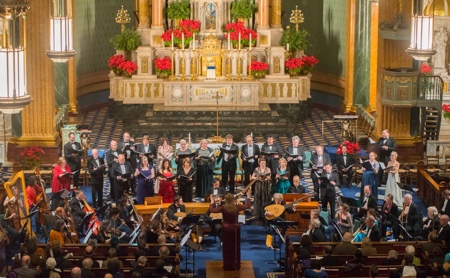
Toth studied piano growing up in Chagrin Falls, Ohio, near Cleveland. She became interested in the organ during her senior year in high school.
“Gwen is a superb keyboard virtuoso and conductor, and her strength lies in the scholarly approach and intelligence she always brings to her profound musicianship,” says Emory Fanning, with whom Toth studied at Middlebury College in Vermont. “Her phrasing and articulation emulate the voice. . . In watching Gwen at work with a wide variety of musicians, I have been impressed with her caring, interest, patience, and sense of humor.”
Toth was a graduate student in composition at City College in New York when one of her teachers suggested she enter the Musica Antiqua Bruges competition in Belgium. It changed her life.
“The competition was the first time I encountered a full historical copy organ with mechanical action, shorter keys and a flat, straight pedal board, which I was not equipped to handle,” she says. “I was a complete newbie on historical keyboards. The judges all gave concerts and there was a stupendous one by Ton Koopman. After I had played rather badly, I was feeling completely stressed out by this organ. Koopman told me he knew it hadn’t gone well for me but he said he heard something promising. When I asked if I could study with him he said yes, but that there was a three-year waiting list.”
Toth was a graduate student at Yale two years later when Koopman had an opening and she moved to Breukelen — the original Brooklyn — in Holland. She says she learned from her teachers, other students, and concerts she attended, and that “Europe completely changed the way I play.”
Koopman’s lessons were on harpsichord, which stimulated Toth’s interest in keyboard instruments before the piano. This bore fruit in 1986 when Toth gave four concerts called “The Art of the Early Keyboard. The programs were 60 percent solo, a heavier keyboard component than a chamber music concert.
“At the end of the last concert, a friend — a lady I’d played recorder music with in the grand tradition of amateurs playing for the love and joy of it — said to me, ‘You’re going to do it again,’” Toth recalls. “I was shocked after all the work in the four concerts I’d just played, but the idea stuck in my head.”
The next season, ARTEK (for Art of the Early Keyboard) was born. In addition to contracting performers and rehearsing and presenting concerts, Toth functions as the group’s librarian and is responsible for administrative work, including development and publicity. Her support group includes a board of directors and her husband, Dongsok Shin. They met over shared love for the harpsichord and before long were teaming up to help each other move their instruments. He’ll play organ at the Christmas Vespers concerts, and he serves as the ensemble’s recording engineer.
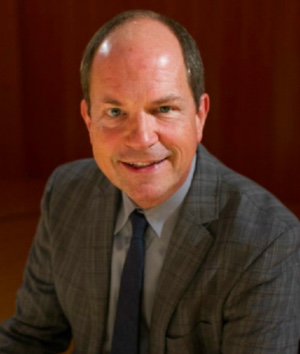
Countertenor Drew Minter, a frequent ARTEK performer, has known Toth since 1980, when both were students at the Bach Aria Group’s first summer institute at SUNY, Stony Brook. He’s made two recordings with her: Love Letters from Italy and Monteverdi’s Madrigals, Book V.
“She specializes in 17th-century Italian music, but I’ve done a lot of Bach with her also,” Minter says. “Our last collaboration was a Torquato Tasso project where I played Tasso and her group did madrigals. She does really good repertoire without fail. I’ve never done a bad piece of music with her ever. Sometimes it’s really interesting repertoire you don’t get a chance to do anywhere else.”
Minter also appreciates Toth’s style of leadership.
“Her approach is actually very chamber-music oriented. She’s not really authoritarian, waiting to see where the strong impulses come from in the group. She has strong feelings herself about rubato and tactus, things very important for 17th-century music. She also respects her singers and players and gets good strong ones who themselves have strong leadership skills. She knows how to breathe with singers and support the vocal line.”
If Koopman changed the way Toth looks at music, it is also said that experience is the best teacher.
“We all get older, you know,” she says. “I feel that my keyboard playing has an enormous subtlety in touch and articulation that I try very hard to pass on to my students and that I just rarely hear in the USA but hear more often in European players. Even after I studied in Europe, it was two years before I thought, ‘Now I’m getting it.’ And it was about three years later that I had another lesson with Koopman and he said, ‘You’re doing well now.’”
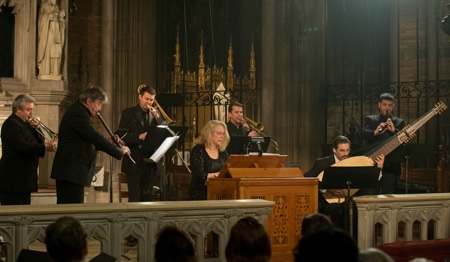
Yet having played so many different kinds of music and so much repertoire from 1400 to 1800, she feels in some ways that getting the best out of any instrument is what she does best.
“It’s a result that depends on touch, critical listening, and changing what I do for each instrument. That’s what I’ve learned over 30 years of playing. I’ve also learned that I’m not going to play late Beethoven sonatas and I’m not even going to try. I think when I was 30, I would definitely have tried, but I’ve recognized that my technique is really solid up through Mozart.”
When Toth performed Rosenmüller’s Vespers music in 2012, she discovered his settings of each text are significantly longer than Monteverdi’s. Her Christmas concert will run a little more than two hours with three Psalm settings, the Magnificat, two Christmas motets — all for six to eight voices — plus a Christmas duet. Short instrumental numbers will show off the cornetti, sackbuts, and string section (Toth says Rosenmüller first became known when string players picked up his music).
She is particularly excited about collaborating again with Les Sacqueboutiers.
“I learn from them as much as I lead them. It’s going to be really interesting to hear how they improvise and decorate on the music. I really can’t wait.”

